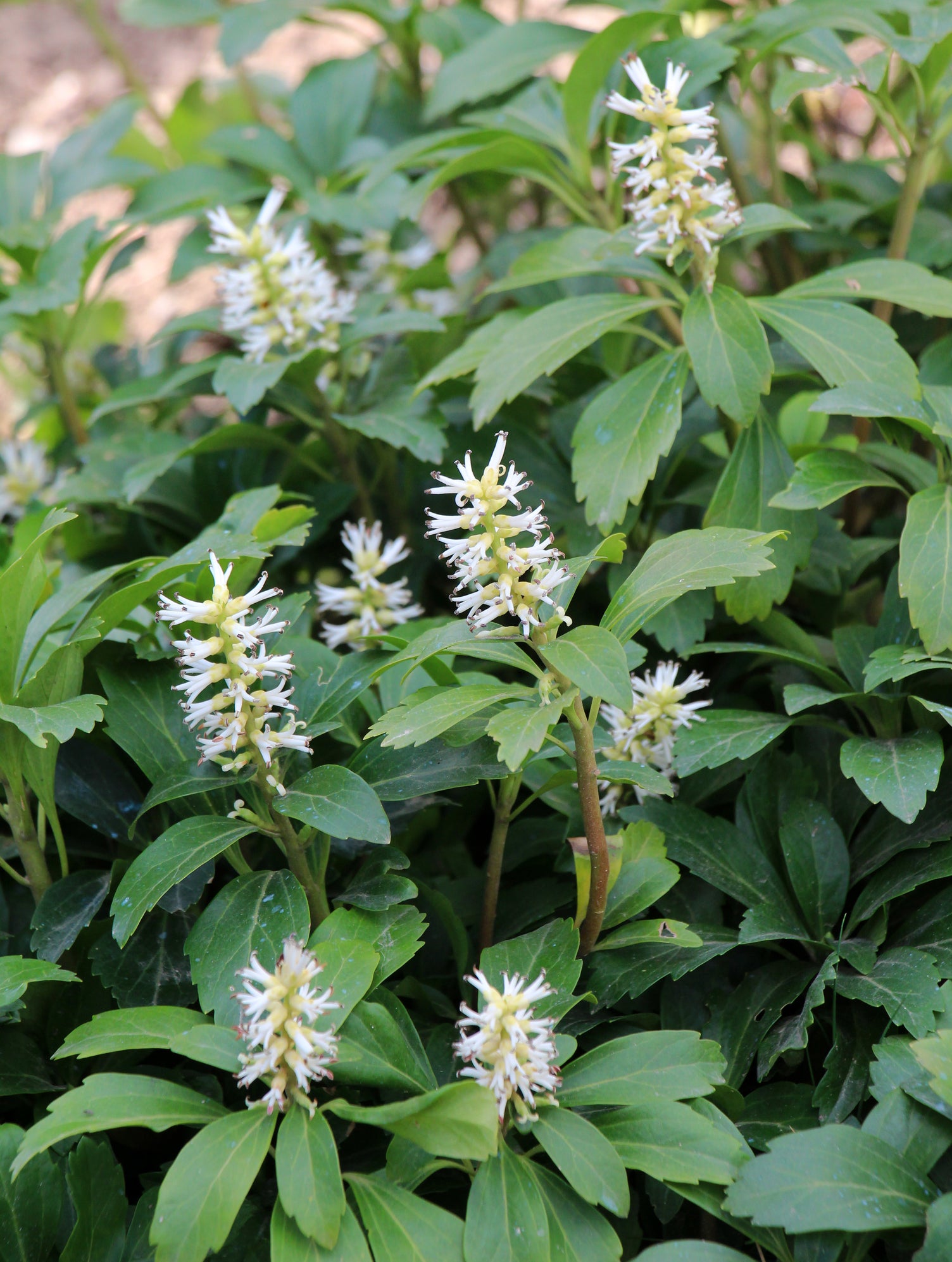
Pachysandra
Pachysandra procumbens, Allegheny spurge, is an understated yet captivating native groundcover prized for its ornamental qualities and ecological advantages.
Characterized by its mat-forming habit, the Allegheny spurge reaches an average height of 6–12 inches (15–30 cm) and spreads similarly by means of underground stems. Its foliage presents larger, softer leaves than the Japanese spurge, typically exhibiting mottled green and silver patterns that add texture and depth to shaded garden spaces. While older foliage may exhibit paler coloration during winter months, the Pachysandra rewards gardeners with a fresh flush of growth in early spring, and its season of interest is punctuated by its fragrant, white bottlebrush flowers, which emerge before the new foliage in late winter, often in March or April. This timing is especially beneficial to pollinators, as these flowers offer an important food source when few other plants are blooming.
Does Pachysandra like sun or shade?
Pachysandra prefers partial to full shade and well-drained, humus-rich soil that can retain some moisture. It is often found naturally growing under deciduous trees, where it benefits from leaf litter and dappled sunlight. It spreads by underground stems and will eventually form a dense mat of foliage. While not as aggressive as Japanese pachysandra, this slow growth habit is often seen as an advantage by gardeners who want a more manageable groundcover. This plant is also an evergreen to semi-evergreen groundcover, which means it provides year-round interest in the garden. In the spring and summer, the fresh green leaves form a lovely backdrop for shade perennials like ferns, wild ginger, trilliums, and columbine. In the fall and winter, the mottled leaves add texture and color to the garden when most other plants have gone dormant.
Is Pachysandra evergreen?
As an evergreen to semi-evergreen groundcover, the Pachysandra provides a visually pleasing year-round groundcover for shaded areas. In addition to spring and summer months, when the vibrant green of new leaves provides a lush foundation for taller shade-loving perennials such as ferns, wild ginger, trilliums, and columbine, it also enhances fall and winter garden displays with its mottled foliage.
Incorporating Pachysandra into the garden also supports local ecosystems by encouraging native biodiversity and offering a preferable alternative to the more invasive non-native pachysandra species. Being well-adapted to its native climate and soil conditions often translates to a hardier, less maintenance-intensive groundcover that more easily integrates with local woodland environments.
Gardeners seeking a low-maintenance, attractive, and environmentally-conscious groundcover option will appreciate the Allegheny spurge for its subdued beauty, seasonal variability, and the benefits it provides to pollinators and native habitats. Ideal for naturalizing a shaded woodland setting, underplanting shrubs and trees, or establishing as a living mulch in challenging shady spots, the Allegheny spurge, Pachysandra procumbens, is a reliable and sustainable addition to the shade garden.




